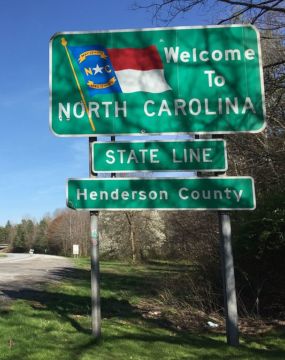Keep up with our latest demographic insights

The percentage of the state’s total population not born in North Carolina continues to rise. Recent estimates from the American Community Survey indicate that 43% of the overall population is non-native, up 1 percentage point from previous five-year estimates when this share was 42%. This share is even higher among the adult population. Nearly half of all individuals 18 and older were born somewhere else and this group has grown faster than the population overall.…

There is a newer version of this blog post available: North Carolina’s Hispanic Community: 2019 Snapshot Series note: This post and the next few in the series are the outgrowth of a presentation jointly developed with Dr. Krista M. Perreira and presented by Dr. Perreira to the October meeting of the North Carolina Governor’s Advisory Council on Hispanic/Latino Affairs. Terminology note: The U.S. Census Bureau introduced the term Hispanic in 1980 and this is a…
After the Great Recession, the volume of Mexican immigration to the United States—and North Carolina—dropped sharply. Between 2009 and 2014, the Pew Hispanic Center found that more Mexican immigrants had returned to Mexico than immigrated to the U.S., with an estimated net migration of -140,000 individuals. During this same time period, Asian countries, such as China and India, emerged as leading senders of immigrants. Similar trends were documented in North Carolina. New data from the…
The percentage of North Carolina adults with a bachelor’s degree or higher rose from 22.8% in 2001 to 28.6% in 2014, according to data from the American Community Survey. Asian-Americans had the highest educational attainment, with more than half of North Carolina’s Asian adults holding a bachelor’s degree or higher in 2014. Non-Hispanic whites also had higher rates of holding bachelor’s degrees than the state overall: 32.4%. The percentage of Asian adults holding a bachelor’s…
North Carolina’s foreign-born population has grown by more than 800% over the past 35 years. In 1980, fewer than 80,000 North Carolina residents had been born in another country to non-citizen parents. By the 2012-2014 time period, more than 750,000 North Carolina residents were foreign-born. Most of this growth was driven by the increases in the populations born in Latin America (Central and South America) and Asia. This post focuses on trends in the foreign-born…
Between 1820 and 2013, nearly 79.5 million immigrants have become lawful permanent residents of the United States according to the Department of Homeland Security’s records. The chart below shows the volume of U.S. immigration by immigrant continent of origin for each decade since 1820. (Note that the volume of immigration drops for 2010-2013 because the decade is only partially complete.) There have been three major waves of immigration into the United States since 1820, marked…
Forty-two percent of North Carolina residents were born in another state or country. In 1950, this proportion was only 15%. The share of North Carolina residents born in state declines steadily with age until prime working-ages, and then begins rising again. Between ages 27 and 50, more than half of North Carolina residents were born in another state or country. North Carolina’s trends in the proportion of native-born residents by age look similar to those of…
“The number of unauthorized immigrants living in the United States has stabilized since the end of the Great Recession and shows no sign of rising, according to new Pew Research Center estimates. The marked slowdown in new arrivals means that those who remain are more likely to be long-term residents, and to live with their U.S.-born children.” – Jeffrey S. Passel, D’Vera Cohn, Jens Manuel Krogstad, and Ana Gonzalez-Barrera, “As Growth Stalls, Unauthorized Immigrant Population…
“When someone says the word “immigrant,” many people likely picture Europeans moving through Ellis Island during the late 1800s and early 1900s. Others think of a more recent time — especially after 1980 — when most immigrants arrived from countries in Latin America, such as Mexico, and, to a lesser extent, Asia. However, it may be surprising to learn that recent data show that the African foreign-born population is one of the fastest growing…
“English-speaking ability is an important topic surrounding immigration in the United States. For the foreign born, fluency in English is associated with greater earnings and occupational mobility. Conversely, the presence of many people with limited English ability requires state and local governments to make costly adjustments, such as providing English as a Second Language classes in schools and translating official forms into multiple languages.” - Christine Gambino, Yesenia Acosta, and Elizabeth Grieco, “English-Speaking Ability of…
Your support is critical to our mission of measuring, understanding, and predicting population change and its impact. Donate to Carolina Demography today.